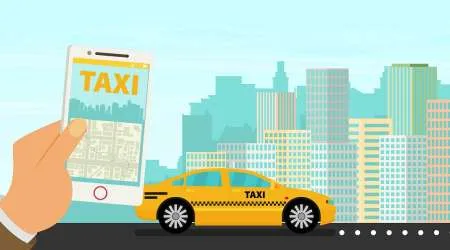When is an Uber more expensive than a taxi?

At what point does surge pricing make Uber more costly?
A few years ago, after a particularly unpleasant taxi trip, I tried Uber for the first time. The experience was effortless, and the price was so affordable that I decided I’d never step foot in a traditional taxi again.
The only annoying element of Uber at the time was the surge pricing (higher prices when there's lots of demand), which was fairly easily avoided as long as you resisted ordering transport until a little later on weekend nights out. Recently, however, as Uber’s customer and driver base have expanded exponentially, it feels like surge pricing is in effect more frequently. Surge ratios of 1.5x are a regular occurrence on weekdays, and ratios above 2.0x are not uncommon during busy times at the weekend. This made us wonder - at which point during an Uber price surge is it better value to simply hop into a taxi?
The Insights team at finder crunched the numbers across five Australian capital cities, and looked at the cost of a journey to five different suburbs in each city ranging from 3km to 30km away from the CBD, comparing the average estimated Uber and taxi fare at two separate time windows - a weekly mid-day and weekend evening trip. As all trips were presumed to be paid by credit card, a 5% card fee was applied to all taxi journeys aside from those in Brisbane, where a 10% fee was applied. Uber does not charge a credit card fee.
City | Surge value limit | Surge value limit |
|---|---|---|
| Weekday mid-day | Weekend evening | |
| Sydney | 1.3x | 1.5x |
| Melbourne | 1.4x | 1.8x |
| Brisbane | 1.7x | 1.7x |
| Perth | 1.5x | 1.6x |
| Adelaide | 1.3x | 1.5x |
| Average | 1.4x | 1.6x |
Our results show that, while the “surge value limit” varies across the country, on average you’re better off grabbing a cab if the surge ratio is over 1.4x during the week and 1.6x on a weekend evening. If you’re on foot in the CBD on a Friday evening and the surge ratio hits 1.8x or higher, you’ll get better value in a taxi no matter which Australian city you’re in.
In some instances, such as mid-week in Sydney, taxis become cheaper than an Uber after a surge ratio of only 1.3x. This analysis does not take into account any taxi hiring or booking fees, so if you’re not out on the street, you may need to also take these fees into account.
For now, this is an easy way to tell when Uber is cheaper, but with Uber introducing fixed pricing in some cities and removing the surge ratio indicator, the days of easy comparison to taxis may be numbered. However, Uber’s days of near 100% share of the Australian rideshare market may be numbered too. There are some indications that Uber’s main US competitor, Lyft, may be launching in Australia soon. This can only be a positive development for Australian consumers, and will likely drive prices down. After all, if Uber’s surge pricing is high, you can easily hire with a different service. In the meantime, make sure not only to keep an eye on the Uber surge multiple, but also the local taxi rank.
Graham Cooke's Insights Blog examines issues affecting the Australian consumer. It appears regularly on finder.com.au.
Recent Insights blogs
Ask a question

Hi
Do I ask for a quote before ordering a Uber taxi. Say going from point Cook 3030 to Melbourne and can you rebook for the return trip thanks
Hi Paul,
You need to download the Uber app for iPhone or Android before you can order an Uber. Once you load the app and enter your destination, you will see a quote for the cost of the trip. You can book your return trip on the app once you need to leave – but watch out for the surge pricing!